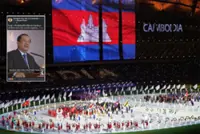For the first time, Princess Zelda takes on the mantle of hero. — Photos: Nintendo
The Legend Of Zelda: Echoes Of Wisdom finds us once again in the imperiled medieval fantasy world of Hyrule. This time, a mysterious force has been creating disastrous rifts that suck buildings and people alike into a dark and mysterious void.
You start by fighting through a dungeon as Link, the protagonist of every previous Legend Of Zelda game, but your time with him is brief.





